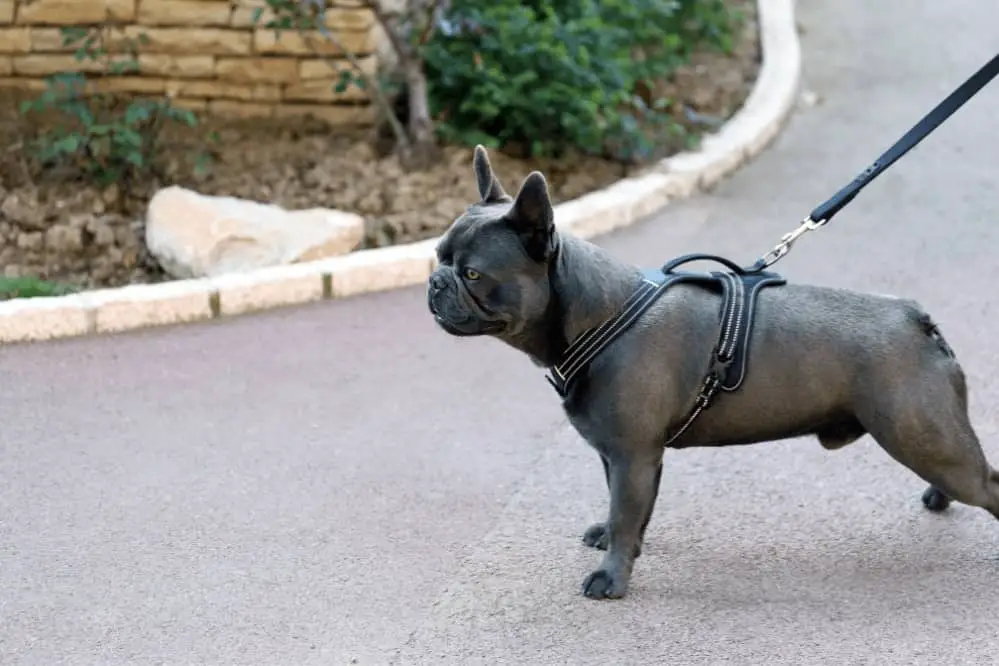Although it is not a very common problem, a number of dog owners have an issue where their dog growls when they try to take their harness off. To try to answer why it occurs isn’t easy simply because every dog will have its own reasons for growling.
If you add into the mix, that not every dog growl you hear sounds the same, then it becomes apparent that there could be a multitude of reasons why a dog growls when its harness is being removed.
For example, not every growl is negative as you will discover when we discuss play growls, so to try to shed some light on all of this, we need to examine some of the main reasons why a dog would might growl, and see if this might relate to their harness being removed.
Play Growling
One of the biggest misconceptions amongst non-dog owners, and in truth, among many owners who do have a dog, is that every time it growls it is a sign of aggression. As you will discover as you read further, that is not the case.
One growl that is truly misunderstood is the growl a dog makes when it is playing. If you have ever been present when two dogs have been playing play tug of war with a length of rope, you will undoubtedly have heard them growling.
Many mistake this as them growling aggressively at the other dog, but instead, it is a play growl which indicates the dog is actually having fun.
If the growl a dog makes comes with no other signs of aggression or discomfort, then it could be your dog is simply play growling.
It may see you getting close to them as a sign that you are going to play with them, and thus they play growl.
Growling When in Pain
We have all heard a dog whining or yelping when it is in pain, but it is also the case that a dog will growl when in pain. This is especially the case if what you are doing to them at the time is causing the pain to intensify.
If their harness is too tight or part of it is rubbing at their skin and causing irritation this could be what is painful to them. It might be that as you are removing the harness, it could be increasing the pain, and thus the dog growls.
Another scenario could be if they have an underlying illness that is undetected but is causing them pain. This is especially the case for any illness that is causing them pain around their stomach or chest area. As the harness is removed, and those areas expand the pain could intensifying and they growl as a result.
Growling Out of Fear
This can be related to the previous section whereby a dog growls in fear of the pain it thinks it might experience when you remove its harness, rather than at the actual pain itself.
Of course, a dog fears many things that are not pain, and if you have had the dog since it was a puppy it can be really difficult to establish why it might fear its harness being taken off.
It may be that you accidentally hurt it on a recent occasion and did not realize, but if that is not it, then you might want to ask other members of your family if anything unusual happened recently while they took your dog’s harness off.
A more common scenario with respect to fear is where a recently adopted dog, or a rescue dog growls whenever their harness is being taken off. This might be due to their previous owner abusing them anytime their harness was taken off, and that thought is still in the dog’s mind.
The way to deal with any of these fear scenarios is to gently remove the harness while speaking softly to the dog as you do so. this should reassure them all is OK, and that they are not about to be injured or abused.
Aggressively Growling as a Warning
This one is of serious concern because if your dog is growling at you as you remove their harness with a deep growl that rumbles then it is warning you that you are in their personal space and to back off. This should not happen between a well-trained dog and its owner.
In this scenario, the dog is basically taking the dominant position, and saying that the territory you are encroaching is theirs. If this is happening, then you need help and more to the point, your dog needs help in changing its behavior.
A dog’s owner should always hold the dominant position in a household, and if that is not the case it can lead to all sorts of unwanted situations, including some which are dangerous if the dog becomes overly aggressive.

